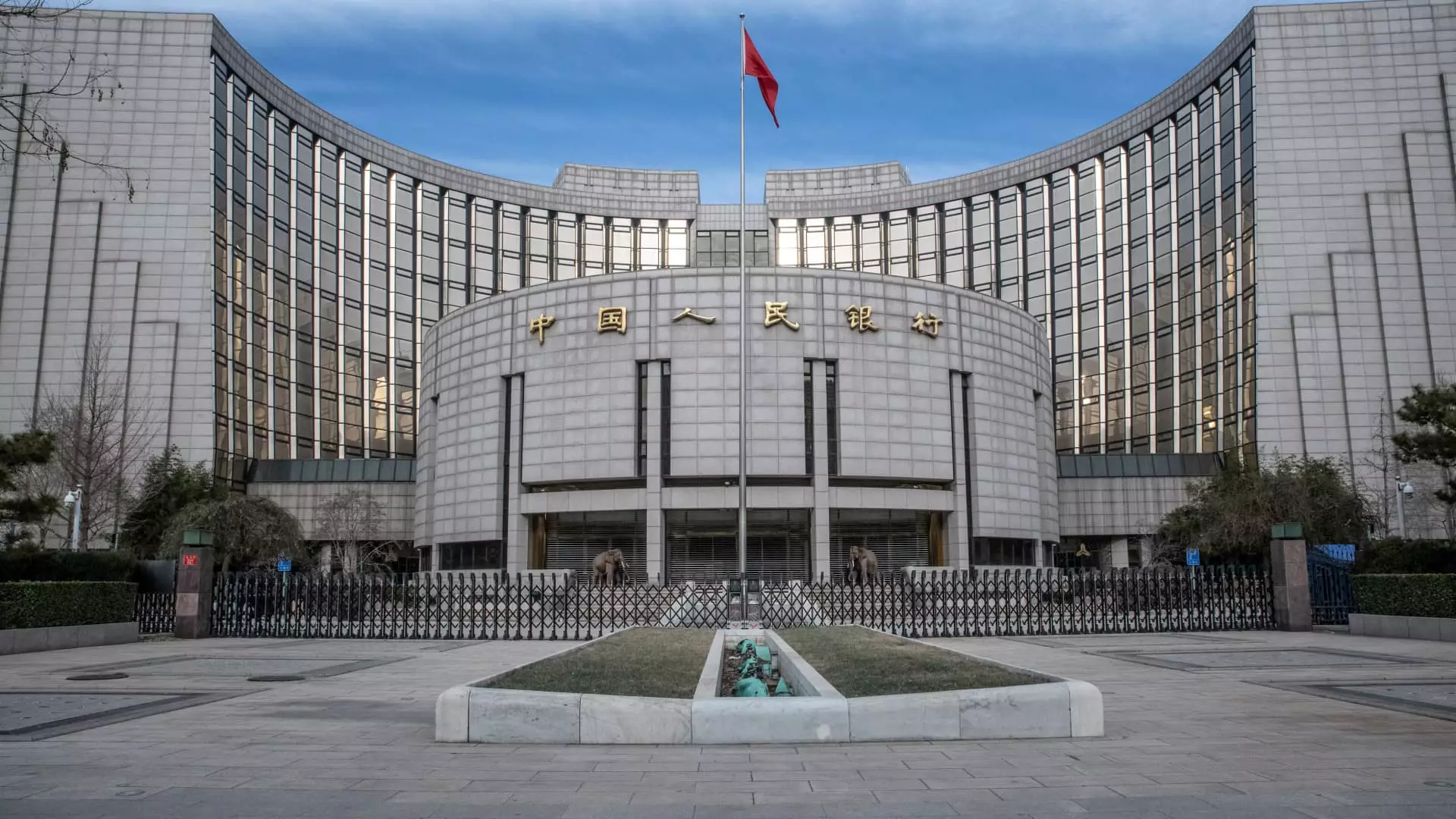As the world’s second-largest economy, China’s growth trajectory has far-reaching implications not only for its citizens but also for global economic stability. Recently, the People’s Bank of China (PBOC) made a critical decision to maintain major benchmark lending rates, a move that has elicited varied interpretations among market analysts and economic stakeholders. By keeping the one-year loan prime rate at 3.1% and the five-year rate at 3.6%, the central bank has signaled a cautious approach as it continues to evaluate the effectiveness of its latest stimulus measures.
Analysts largely expected the PBOC to keep interest rates steady amidst the ongoing assessment of economic recovery efforts. Bruce Pang, a notable economist at JLL, pointed out that the economic leadership in China is currently weighing the impact of various initiatives aimed at revitalizing economic momentum. With many commercial banks facing record-low net interest margins, their capacity to lower lending rates further is constrained. This limitation raises concerns over the sustainability of economic growth if the lending environment remains static.
The unchanged rates come on the heels of a prior reduction of 25 basis points in both the one-year and five-year LPRs, a move that reflects the urgency in addressing economic sluggishness. Despite these actions, data from October painted a stark picture characterized by disappointing industrial production and investment figures, coupled with a deepening annual decline in real estate investment. This backdrop amplifies the challenges facing policymakers in navigating a softening economy.
While some indicators of economic activity reveal a mixed bag, recent statistics show that retail sales rose by 4.8% year-on-year, exceeding market expectations. This surge suggests that certain aspects of economic stimulus are beginning to take effect, highlighting a potential turning point in consumer sentiment. However, the broader picture of an economy grappling with systemic issues, notably in the real estate sector and consumer spending, remains concerning.
The ongoing property crisis continues to cast a long shadow over economic prospects, prompting the government to unveil a significant five-year fiscal package aiming to address local government debt—a sum totaling approximately 10 trillion yuan ($1.4 trillion). This measure is coupled with indications from the central bank’s governor, Pan Gongsheng, that there remains ample room for further rate cuts should conditions necessitate such interventions in the near future.
As the PBOC evaluates its policy direction, projections for China’s economic growth show a downward trend. Major financial institutions like Morgan Stanley predict that growth will hover around 4% over the next two years, while Goldman Sachs anticipates a slight deceleration to 4.5% by 2025 from an estimated 4.9% this year. This cautious outlook is influenced by various economic stressors, including rising trade tensions and a potential deflationary environment.
The implications of these forecasts extend beyond China’s borders. With the prospect of Donald Trump’s return to power potentially imposing higher tariffs on Chinese exports, exporters and businesses ingrained in the global supply chain are bracing for more turbulence. These trade complexities underscore how interconnected the world’s economies are, especially as China’s export-driven sectors are cornered in an increasingly protectionist landscape.
While the PBOC’s decision to hold lending rates steady reflects a calculated strategy in navigating the challenges of economic recovery, underlying concerns about growth persist. Policymakers remain vigilant about adjustments, ready to adapt their approach as needed. Understanding the intricate layers of China’s economic landscape is essential for investors, businesses, and policymakers alike, as they interpret the central bank’s maneuvers against the backdrop of fluctuating global dynamics. The future of China’s economy will depend on striking a delicate balance between stimulating growth and responding effectively to emerging risks both domestically and internationally.

